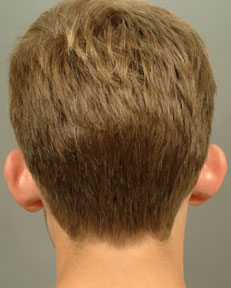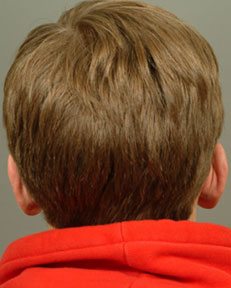The need to cosmetically reshape a person’s ears through an ear surgery procedure, known as otoplasty, can arise from several factors, including ear protrusion and size abnormalities (such as overly large ear lobes, lop ear (where the ear is angled forward while the tip folds downward) and ears with missing components, known as shell ear). Prior to cosmetic ear surgery, you will discuss with your facial plastic surgeon the reason you are pursuing the procedure, as well as your goals for the surgery, potential complications and the likely recovery time frame. Insurance coverage is also an important consideration for this surgery, as it may depend upon whether the surgery is addressing a functional ear issue (such as a hearing impairment or deformity) rather than solely for cosmetic reasons. The procedure can be performed in several different ways however, the ability to reconstruct an ear requires thorough comprehension of the structure. Ear surgery specialist Dr. David J. Congdon of Cedar Valley ASCENT has extensive experience with ear reconstruct-ion and significant knowledge of the ear’s underlying structure and he uses innovative techniques to provide ear reconstructions that are cosmetically appealing. Ear surgery is generally an outpatient procedure that requires some lifestyle adjustments immediately following surgery and that otherwise heals within a few weeks.
Ear Surgery
Ear Surgery
Ear surgery generally takes two-to-three hours and is performed in one of several ways. One of these methods entails folding and repairing the ear cartilage through stitching, which in turn helps change the shape of the ear. Another is to remove the cartilage by cutting it away. Through both processes, an incision is created behind the ear, thereby allowing the surgeon to more easily access this cartilage that is the key to ear reshaping. The time for this procedure can vary, with most cases taking no more than three hours and others taking longer depending on the level of reconstruction involved. Ear surgery is most commonly practiced as an outpatient procedure (although child patients will often stay in the hospital) and recovery begins with the patient being monitored by a friend or family member who can drive them home after the surgery and stay with them that evening. Recovery from ear surgery entails staying home for up to one week and maintaining your head bandage per your physician’s instructions, which will eventually transition to a smaller headband after a few days that you will wear for a maximum of three weeks post-surgery. Scarring, swelling and pain will fade over time and stitches can generally be removed a week after surgery.
Is Ear Surgery right for you?
It’s important to remember that ear surgery will not alter your hearing ability. What is important for successful ear surgery is that the ears be in proportion to the size and shape of the face and head and that the underlying issue (disfigurement of some type) be addressed. When considering ear surgery for their minor child, parents must be confident they have their child’s best interests at heart. A positive attitude toward the surgery is an important factor in all facial plastic surgery but it is especially critical when the patient is a child or adolescent. Adult candidates for ear surgery should understand that the firmer cartilage of fully developed ears does not provide the same molding capacity as in children.
Case Study
The patient featured below underwent ear surgery.

Before
